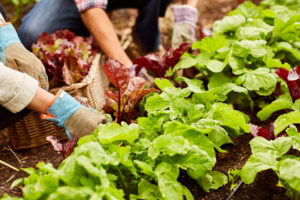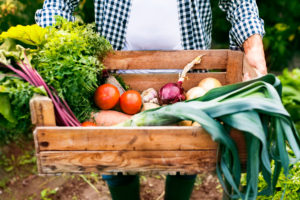The Early May Vegetable Garden
The season has arrived! It’s early May, so with warmer temperatures and plenty of rain, it’s time to begin planting cool-season plants and seeds in your vegetable garden. Heat-loving plants like tomatoes, eggplants and peppers still need steady nights above about 10 degrees, but there are plenty of hardy varieties that can begin growing in the garden this weekend.
Here’s what to do right now:
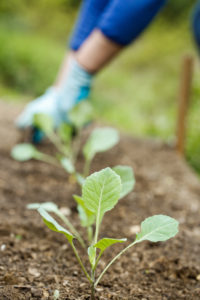 1) Plant “cold crop” Veggies
1) Plant “cold crop” Veggies
Broccoli, Cauliflower, Brussels Sprouts, Cabbages, Kales, and other leafy lettuce greens can be planted into the ga
All of these plants can be eitherrden now! planted as seedlings (veggie flats are available in TERRA stores from late April until they’re sold out) or sown directly into the garden from seed. You can shop seeds here.
Our friends at West Coast Seeds have created a Southern Ontario Planting Chart, which is a handy resource. View the chart here for an at-a-glance guide to when to plant, and whether to sow from seed or transplant seedlings.
Pro Gardener Tip: Lettuces and leafy greens mixes are great seeds to stock up on in spring. Lettuce prefers relatively cool temperatures, so it can be grown throughout the entire spring, summer, and fall seasons. In hot months, it tends to “bolt”, which means it begins to flower and becomes bitter to taste. Sowing lettuce every 3 weeks or so, and harvesting frequently as “baby greens” solves this problem, and keeps fresh summer salads at your fingertips.
2) Direct-sow root crops, leafy greens and climbers
Freshen up your garden beds with a layer of fresh triple mix and begin seeding carrots, beets, radishes, lettuces, kale, arugula, peas, and beans. These varieties are tolerant of the remaining cold nights as weapproach the official “last frost” date. Sow in rows (remember to label as you plant so you remember where you’ve planted!) and keep the soil surface moist until seedlings appear.
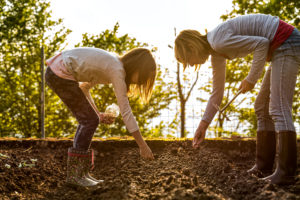
As with the lettuce tip above, it’s smart to buy extra seed.
Planning “succession sowing”, or repeatedly planting in intervals through the season, means that as you harvest your first carrots and handfuls of spinach, there will be more harvests coming on as the season progresses, instead of just one. Experiment with growing in different areas, in containers on patio or balcony, or mixed in with flower borders. Encourage kids to participate, or to create a patch that’s all their own. Anyone can grow food, and you can grow food almost anywhere!
3) Plant heat-loving edibles in containers
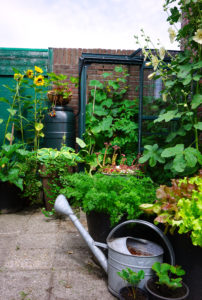 If you can’t wait to start growing those luscious tomatoes, fresh zucchini, and hot peppers, plant them in pots for the patio so they can be kept warm indoors on cold nights. It’s that frustrating time of year where we’re SO eager to get all of our summer plants growing… but a sudden cold snap overnight or blast of late snow can wipe out tender blooms or precious seedlings. Growing long-season crops in containers is a great way to enjoy summer fruits earlier without the worry of protecting them from cold spring nights in the garden.
If you can’t wait to start growing those luscious tomatoes, fresh zucchini, and hot peppers, plant them in pots for the patio so they can be kept warm indoors on cold nights. It’s that frustrating time of year where we’re SO eager to get all of our summer plants growing… but a sudden cold snap overnight or blast of late snow can wipe out tender blooms or precious seedlings. Growing long-season crops in containers is a great way to enjoy summer fruits earlier without the worry of protecting them from cold spring nights in the garden.
Container-growing fruits and veggies is also a way to enjoy growing food in almost ANY space. If you have pots, sunshine, and water, you can plant small-space veggies to grow and enjoy. Try Patio Tomatoes, Hanging Basket Strawberries, or create a mixed planter with herbs, greens, or peppers. You can even grow tropical citrus in the summer!
4) Get your favourites early
The best veggies sell quickly! Assess your needs for the season and buy what you want early, even if you’re not planting all of it outdoors right away. By planning ahead and planting a combination of seeds, seedlings, and larger, more established plants, you can begin harvesting earlier in the season, and continue growing and harvesting later.
5) Harden off the seedlings you’ve grown
If you stretched your gardening skills over the late winter and started seeds indoors, it’s time to acclimate them to living outdoors. Begin bringing trays of seeded flowers and veggies outdoors for a few hours daily, gradually increasing the time each day, and keeping them indoors at night. Over 1-2 weeks, the tender plants will strengthen to be resilient to the harsher conditions of the outdoor environment, making them tough enough to plant into the garden in time for the May long weekend.
Happy growing!

